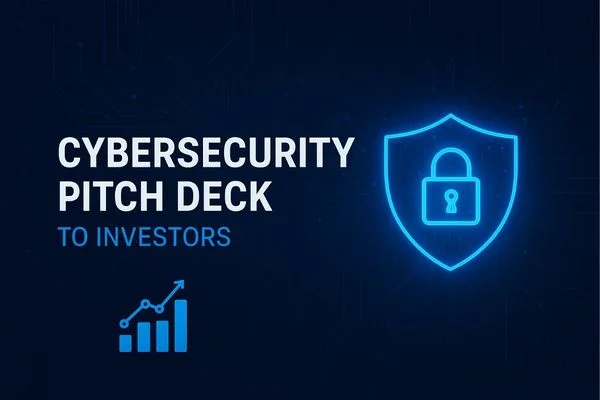
Source: Pixabay.com
Introduction: :
As the world continues to usher in the ease of online transactions, no one will argue that PayPal remains one of the most trusted platforms out there. But just like any other system, PayPal is not immune to exploitation. PayPal email scams are common, and these phishing attacks extend beyond just gaining a user’s sensitive information. Having worked in the field of online security for several years now, I’ve followed the digital fraudulent practices which have become more and more sophisticated over the years.
Cyber Security Risks
Scam emails have become one of the most complex cybersecurity challenges that exist today. Taking advantage of the vulnerability of users is what these scammers build their intricate worlds of deception on, and they do it with laser-sharp focus. It is an extreme and constantly changing landscape out there – a battle to outsmart these attackers requires robust fraud detection systems, a sharp eye, continuous education, and proactive measures.
The Anatomy of a PayPal Email Scam: Examining the Digital Fraud
Mental/Mind Manipulation Strategies
Some scammers use advanced social engineering techniques to put together an email that makes the recipient act without thinking due to overthinking and anxiety. Their methods of contact are specifically tailored to avoid any form of rational assessment:
- Structural Deception: Putting together a message with perfect grammar and syntax, just like their official documents.
- Visual Fraud: Employing logos and design aspects from the fake company that mimic the original platform
- Identity Fraud: Faking the appropriate logo of that platform, thus creating a false sense of security
These communication fraud attempts exploit psychological loopholes. They shift the primary focus to lower user awareness, which is a scammer’s worst nightmare. To combat that disadvantage, they resort to electronic communication techniques to enforce a sense of urgency.
Scams of Today are More Sophisticated Than Ever
Today’s advanced technology has gone beyond mere phishing attempts. Scammers are now using.
- Advanced Spoofing Techniques
- Powerful Content Creating Machine Learning Algorithms
- Complicated Email And Domain Networks
- Advanced Surveillance Systems
Cybersecurity experts struggle to make sense of modern-day fraud due to the highly advanced technological systems cyber scammers utilize.
Identifying the Warning Signs: A Guide on Visual and Textual Signs of Scammers
Some indicators can be easily recognized in email scams by scammers. These are:
- Use of threatening or urgent language.
- Asking for action to be taken immediately.
- Lack of correct grammar and syntax (even if they seem correct).
- Attachments and links that seem suspicious.
- Non-personalized communication, such as a general “Hello” Salutation.
Mention of account suspension or legal threats.
Common Scam Scenarios
Scenario 1: Account Verification Emails
Scammers send emails using legitimate but fraudulent PayPal addresses claiming that your account needs immediate verification. The email contains:
- Important Security Notice: Account Suspension Highly Likely
- Request a click on a hyperlink to “verify” details
- Warning about loss of access to service
Scenario 2: Transactions Illegally Done
Warning: This is another common type of misleading communication where;
- Phishing transaction alerts are sent
- Unvalidated claims of previously done activities
- Request to “confirm” private information
Technical Defense Mechanisms
Applying Comprehensive Information Security Policies
Verify E-mail Correspondences
- Do not follow hyperlinks within emails.
- Always enter PayPal’s approved web address. Never click links given in emails.
- Typed or bookmarked URLs are safer.
Guidelines for the Protection Of Advanced Users
- Enable two-factor authentication.
- Adopt distinctive and complicated passcodes.
- Several users can view and control an account’s activity. Set up alerts for transactions.
Cyber Threat Detection Tools
Obtain one or several pieces of well-known antivirus software. Utilize email filter services. Apply higher-level cybersecurity to the computer network.
Mental Readiness and User Awareness
Preventing scams entails more than just the technological aspects; it involves mental toughness as well. Users need to develop:
- A critical attitude for any unsolicited contact
- Knowledge of social engineering techniques
- Ability to tell when someone is attempting to manipulate them
- Rational actions under real or perceived pressure
Legal and reporting mechanisms
In cases of PayPal email fraud, the following measures are recommended:
- Take a screenshot of all pertinent information.
- Reach out to the security department of PayPal.
- Engage with pertinent law enforcement officials regarding cybercrime.
- Safeguard all digital forensic data relevant to the case.
- Inform your relevant banking institutions.
Trends in Digital Fraud 2023
The risk of cyber attacks is always changing and includes the use of:
- AI driven phishing scams
- Multi-platform fraud
- Tailored scam calls
- Blended communication fraud
Technological Countermeasures
The newly emerging technologies in the field of information security are defending themselves using:
- Fraud identification using machine learning.
- Verification through blockchain.
- Sophisticated behavioral analysis.
- Quantum encryption methods.
Global Impact and Economic Consequences
Scamming people on the internet is not a single person issue:
- Annually loses of trillions due to cybercrime
- Has immense financial effects
- Trust of consumers in digital services plummets
- Proactive spending on a company’s digital protection systems multiplies
Empowerment Through Knowledge
Education remains the best tool users have at their disposal for preventing scams. Through learning the tactics used against them, users become active defenders rather than passive victims.
Conclusion on Digital Resilience
The pursuit of online security is an ongoing process that requires an individual to learn, adapt, and outwit the fraudsters at every turn. The quality of your digital experience lies in your ability to identify, refuse, and report deceptive communications.
Frequently Asked Questions About PayPal Email Scams
Q1: How can I distinguish a legitimate PayPal email from a scam?
Legitimate PayPal emails will:
Never ask for personal login credentials Use your full name, not generic greetings Have precise, professional language Contain no urgent or threatening tone Include specific transaction details Come from verified @paypal.com domains
2. What immediate steps should I take if I receive a suspicious PayPal email?
Do not click any links Do not download attachments Do not reply to the email Forward the email to spoof@paypal.com Delete the email immediately Log into your PayPal account directly through the official website Check your account for any unauthorized activities
3. Can scammers really make emails look exactly like PayPal’s official communications?
Yes, smart scammers use sophisticated:
Visual deception techniques Genuine logos Linguistic manipulation Advanced electronic communication tools Precise grammar mimicry Design replication strategies.
4. What are the most common types of PayPal email scams?
Primary scam categories include:
Account suspension threats Fake transaction alerts Phishing verification requests Unauthorized login notifications Reward or compensation scams Fake invoice frauds.
5. How do fraudsters typically trick users?
Scammers employ:
Social engineering tactics Emotional manipulation Creating false sense of urgency Exploiting user vulnerability Psychological pressure techniques Information disclosure triggers.
6. What technological defenses can protect me from PayPal email scams?
Recommended online security measures:
Two-factor authentication Advanced email filters Updated antivirus software Network-level security tools Regular account monitoring Suspicious link detection systems.
7. Are there legal protections against PayPal email scams?
Legal protections include:
Cybercrime reporting mechanisms Financial fraud investigation units Consumer protection laws Digital platform liability frameworks International cyber fraud treaties.
8. How quickly do I need to report a potential scam?
Immediate reporting is crucial:
Screenshot all evidence immediately Report within 24-48 hours Contact PayPal security team Notify local cybercrime authorities Preserve digital forensic evidence.
9. Can scammers access my bank account through a PayPal email scam?
Potential risks include:
Identity deception Credential theft Financial information compromise Unauthorized transactions Personal data exposure.
10. How are digital fraud techniques evolving?
Emerging scam trends:
AI-generated phishing content Cross-platform fraudulent communication Hyper-personalized scam attempts Advanced spoofing technologies Machine learning manipulation techniques.
11. What psychological tactics do scammers use?
Psychological manipulation includes:
Creating artificial urgency Exploiting emotional vulnerabilities Triggering fear responses Inducing immediate action Bypassing rational decision-making.
12. How can I improve my user awareness about PayPal scams?
Awareness improvement strategies:
Continuous cybersecurity education Following official security blogs Attending online safety webinars Practicing critical email evaluation Staying updated on latest cyber threats.
13. What should I do if I’ve accidentally clicked a link in a suspicious email?
Immediate recovery steps:
Disconnect from the internet Run full antivirus scan Change PayPal password immediately Monitor financial statements Contact PayPal support Consider credit monitoring services.
14. Are small businesses more vulnerable to PayPal email scams?
Small business vulnerabilities include:
Limited cybersecurity resources Less sophisticated information security Higher transaction volumes Multiple email interactions Less formal training.
15. How often do PayPal scams occur?
Statistical insights:
Millions of attempts annually Billions in potential financial losses Increasing complexity of digital fraud Growing global cybercrime ecosystem







